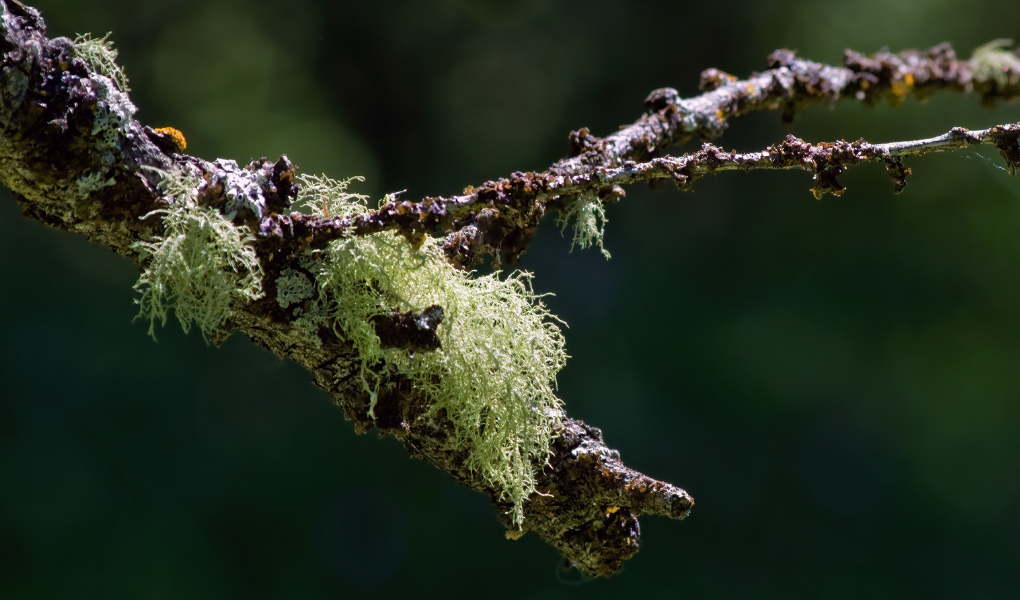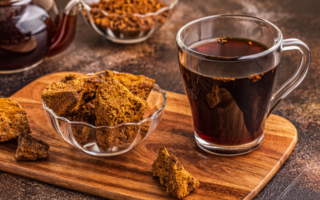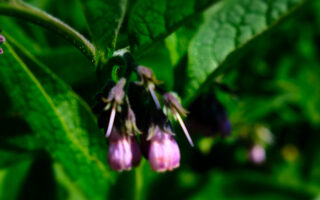Usnea, is a lichen that has traditionally been used in Chinese Medicine for centuries and aids in supporting the kidneys, respiratory system, as well as immune system. It is known for its cooling and drying properties while helping to eliminate heat, toxins and dampness. It can be used as a tincture, extracted or brewed into a tea to alleviate symptoms caused by colds and viruses. It can also turned into a powder or salve and used for its antibacterial and antifungal properties to clean wounds, treat skin conditions or treat athletes’ foot.
What is Usnea?
Usnea (Dolichousnea longissima, U. barbata, and U. californica) are lichens, a combination of Fungi and Algae that thrive on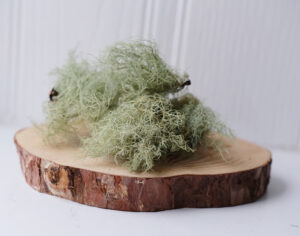 host trees in pristine environments around the world.
host trees in pristine environments around the world.
Usnea is edible but commonly consumed as a liquid extract or applied topically. It can be made into herbal tea and has a variety of nicknames such as tree moss, beard moss, beard lichen, and old man’s beard.
You’ll often find Usnea growing in more pristine environments as it is sensitive to pollution and toxins in the air. It grows in abundance in The Scottish Highlands. If foraging we suggest rather than pulling it from trees collect it from branches or the ground where it has fallen. Do be sure to collect it away from roadsides and well-used pathways, as with all wild foraging, we advise that you take no more than is needed
The Magical Properties of Usnea’s:
Usnea contains a wide range of metabolites, polysaccharides, fatty acids, phenolic acids, flavonoids, terpenes, sterols, depsides, depsidones, and benzofurans. As specific constituents, usnic acid, polyphenols, and depsides have been considered its main efficacy components for antibacterial and antifungal activities.
It is used to address various conditions such as sore throat, fever, inflammation, kidney problems, coughs, and infections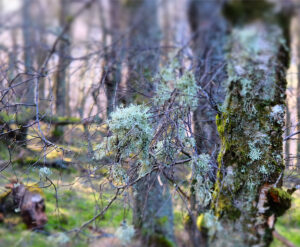 affecting the respiratory tract, skin, and urinary tract. On top of this Usnea exhibits antiviral, antibacterial, anti-inflammatory, and antimicrobial properties, combatting bacteria like Streptococcus and Staphylococcus. It is commonly found in herbal formulas for colds, sore throats, and skin infections.
affecting the respiratory tract, skin, and urinary tract. On top of this Usnea exhibits antiviral, antibacterial, anti-inflammatory, and antimicrobial properties, combatting bacteria like Streptococcus and Staphylococcus. It is commonly found in herbal formulas for colds, sore throats, and skin infections.
Usnic acid serves as a preservative and deodorant in cosmetics, appearing in products like lotions, toothpaste, mouthwash, deodorants, shampoos, and sunscreens.
How to use Usnea:
Usnea can be used in extract form, often combined with other immune-supporting herbs for short-term treatment of specific issues. Research potential side effects before use, especially regarding prolonged use. Most herbalists will use it as an extract or tincture, some will also use it in a powdered form or salve, depending on the issue at hand. One way of using it easily for everyday use it to make it into a tea during winter, it helps fortify the respiratory tract, eases sore throats and is a perfect compliment for the cold and flu season.
Making Usnea Tea
Simmer a small amount of Usnea in half a litre of water for 15-20 minutes on low heat. Enhance the benefits and flavour by adding a few sprigs of Scots pine and sweeten with honey before serving. It tastes and is reminiscent of clean fresh forest air.
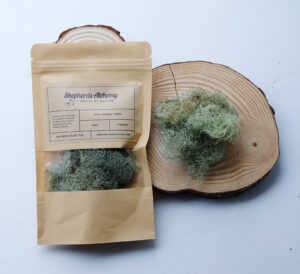 Usnea is a true little-known gem often looked over in the forest landscape but has truly magical properties that make it a worthy addition to anyone’s natural home medicine cabinet, and an ideal herbal tea as and when needed during the winter cold season.
Usnea is a true little-known gem often looked over in the forest landscape but has truly magical properties that make it a worthy addition to anyone’s natural home medicine cabinet, and an ideal herbal tea as and when needed during the winter cold season.
If Usnea is not available or you don’t have easy access to local forests to forage, it is available in our online shop for purchase. Sustainably foraged in the Scottish Highlands.
Usnea has a fair amount of uses, however, this blog is not meant as medical advice, so please be sure to do your research, and be careful when taking other medications.
Sources:
Botanical Institute
Published Research
Lost in the Ozarks
